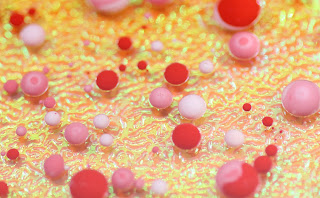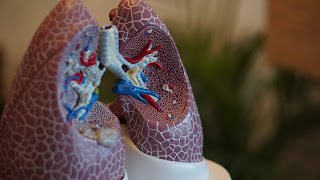All You Need To Know About Anaemia
What is Anaemia?
Anaemia refers to the situation when there is a decrease in the level of haemoglobin (Hb) in the blood below the reference range for the age and sex of the individual affected. In other words, it’s a condition in which one lacks enough healthy red blood cells to carry adequate oxygen to your body tissues. Haemoglobin is the substance (a protein) in your red blood cell that carries oxygen from your lungs to your organs and tissues and transports carbon dioxide from your organs and tissues back to your lungs for exhalation into the atmosphere. Thus, when your haemoglobin level is low, its ability to carry adequate oxygen for supply to your tissues becomes compromised.HOW COMMON IS ANEMIA?
Globally, anaemia is estimated to affect more than 2 billion people (approximately 30% of the world’s human population). WHO further estimates that 42% of children less than 5 years of age, and 40% of pregnant women worldwide are anaemic. It is known to be more common in resource-poor countries, but it also affects a significant number of people in industrialized countries.WHO CAN GET ANAEMIA?
Anyone can develop anaemia. However, there are certain groups of people who tend to have a higher risk than others. These include:
Infants: This happens especially when they are weaned from breastmilk or formula to solid food, they may not get enough iron which is needed to produce haemoglobin.
Young children of ages 1 to 2: During their growth spurts, these children’s bodies may require more iron, and if they are not getting enough through their food then anaemia could result.
Women: the loss of blood during their monthly menstrual periods and childbirth can make women more prone to develop anaemia, especially so when they have heavy periods or suffer from conditions like uterine fibroids.
People taking blood-thinning medications: Such medications are often used to treat certain blood disorders and include the following: warfarin, heparin, aspirin, clopidogrel among others.
People with inherited blood disorders like sickle cell disease or thalassemia: These disorders tend to affect the integrity and lifespan of the red blood cells
People aged over 65 years: These people tend to suffer from certain chronic diseases notably, kidney diseases, which tend to affect the production of haemoglobin in the body.
HOW DOES ANAEMIA MANIFEST IN A PERSON (SYMPTOMS & SIGNS)?
There are several ways in which all types of anaemia can manifest in a person. Some of these symptoms are non-specific, as they can also occur in people with other conditions. The common symptoms and signs include the following, among others:
Fatigue
Headaches
Feeling cold
Feeling faint
Breathlessness
Sore tongue
Pale skin (in light-skinned people) or paleness in the palms and eyelids, dry skin
Fast heartbeats (palpitations)
Dizziness or weakness
Chest pain (angina)
WHAT ARE THE CAUSES OF ANAEMIA?
There are several different types of anaemia. However, the common feature with each of them is that they cause a drop in the number of red blood cells in circulation in the body. To conclude that one has a low quantity of Red Blood Cells, one or more of the following four conditions must be present:
Infants: This happens especially when they are weaned from breastmilk or formula to solid food, they may not get enough iron which is needed to produce haemoglobin.
Young children of ages 1 to 2: During their growth spurts, these children’s bodies may require more iron, and if they are not getting enough through their food then anaemia could result.
Women: the loss of blood during their monthly menstrual periods and childbirth can make women more prone to develop anaemia, especially so when they have heavy periods or suffer from conditions like uterine fibroids.
People taking blood-thinning medications: Such medications are often used to treat certain blood disorders and include the following: warfarin, heparin, aspirin, clopidogrel among others.
People with inherited blood disorders like sickle cell disease or thalassemia: These disorders tend to affect the integrity and lifespan of the red blood cells
Fatigue
Headaches
Feeling cold
Feeling faint
Breathlessness
Sore tongue
Pale skin (in light-skinned people) or paleness in the palms and eyelids, dry skin
Fast heartbeats (palpitations)
Dizziness or weakness
Chest pain (angina)
The body is unable to make adequate haemoglobin;
The body can make haemoglobin but the haemoglobin is defective;
The body is unable to make adequate red blood cells; and
The body breaks down red blood cells too quickly.
The most common cause of anaemia is low levels of iron in the body. This type of anaemia is known as iron deficiency anaemia. This is because the human body requires a certain amount of iron to produce haemoglobin. However, other types of anaemia are caused by the following situations:
Diets that are deficient in certain types of vitamins such as vitamin B12 (pernicious anaemia); and folic acid (Folate deficiency anaemia). This type of deficiency can also occur in conditions where the body is unable to absorb or correctly utilize these vitamins.
Certain inherited blood disorders, notably, sickle cell disease or thalassemia.
Conditions that cause the red blood cells to break down too fast (aka hemolytic anaemia).
Loss of blood from the body due to certain conditions such as ulcers (in the stomach or parts of the intestines), haemorrhoids (aka piles), uterine fibroids (in females), etc.
Certain chronic conditions cause your body to have insufficient hormones to create red blood cells. Such conditions include thyroid gland disorders (hyper- or hypothyroidism), chronic kidney disease, connective tissue disorders (e.g. lupus, rheumatoid arthritis, etc.).
The body is unable to make adequate haemoglobin;
The body can make haemoglobin but the haemoglobin is defective;
The body is unable to make adequate red blood cells; and
The body breaks down red blood cells too quickly.
Diets that are deficient in certain types of vitamins such as vitamin B12 (pernicious anaemia); and folic acid (Folate deficiency anaemia). This type of deficiency can also occur in conditions where the body is unable to absorb or correctly utilize these vitamins.
Certain inherited blood disorders, notably, sickle cell disease or thalassemia.
Conditions that cause the red blood cells to break down too fast (aka hemolytic anaemia).
Loss of blood from the body due to certain conditions such as ulcers (in the stomach or parts of the intestines), haemorrhoids (aka piles), uterine fibroids (in females), etc.
Certain chronic conditions cause your body to have insufficient hormones to create red blood cells. Such conditions include thyroid gland disorders (hyper- or hypothyroidism), chronic kidney disease, connective tissue disorders (e.g. lupus, rheumatoid arthritis, etc.).
HOW DOES IRON-DEFICIENCY ANAEMIA COME ABOUT?
Being the commonest type of anaemia, it is worth exploring a little further how one can develop it. This type of anaemia can be developed from one or more of the following situations:
Inadequate intake of iron-rich diets (nutrition-related anaemia).
Bleeding, either from losing small amounts of blood over a long period, (e.g. bleeding internally from a stomach ulcer, or fibroids during a women’s menstrual period, etc.); or from losing a large amount of blood over a short time (e.g. when involved in a serious accident).
During pregnancy or certain illnesses, the body tends to need more iron than it previously needed.
The type and number of blood and other tests that can be done will often depend on the type of anaemia you have.
Usually, a small quantity of blood, taken from a vein in your arm is tested in the laboratory to determine if you have anaemia. The commonest test done is usually the full blood count (FBC). This test provides a wide array of information about your haemoglobin level, the quantity, size and shape of your red blood cells, and the number of your platelets.
Other tests that can be done include:
Blood tests to determine the level of iron, vitamins B12 and B9 (when dealing with Iron or Vitamin B12 or Folate deficiency anaemias).
Blood and urine tests to determine if you have haemolytic anaemia
Blood test in your stool (faecal occult blood) to determine if you are bleeding from your gastrointestinal tract. Sometimes a special flexible tube is passed through your back passage to visualize any bleeding in your large intestine (aka colonoscopy).
Removal of a small amount of bone marrow tissue (bone marrow aspiration/biopsy) for examination, in certain rare conditions.
HOW IS ANAEMIA TREATED?
For instance, for iron deficiency anaemia, you may be given iron supplements to be taken by mouth and encouraged to eat high iron foods. In some cases, depending on the severity of the anaemia, you may be given iron through intravenous (IV) infusion or transfusion of red blood cells. The same applies to anaemia due to vitamin B12 or folate deficiency, where these vitamins would be administered either orally or intravenously, depending on the severity.
If the anaemia is caused by a sudden loss of a large amount of blood, then transfusion of blood will be administered, and the source(s) of the bleeding will be treated through, for instance, surgical means.
If the anaemia is caused by internal bleeding such as from a bleeding ulcer or haemorrhoids or fibroids, surgical repair might be needed.
In anaemia of chronic disease, e.g., chronic kidney disease, in addition to iron supplements, injections of a hormone that stimulates the bone marrow to produce red blood cells, known as erythropoietin (EPO) may be given.
WHAT COMPLICATIONS CAN RESULT FROM ANAEMIA?
When left untreated, anaemia can lead to several serious complications. These include:
On the heart: irregular heartbeat (arrhythmia), an enlarged heart or heart failure.
In sickle cell anaemia: there are often Heart and Lung complications.
In older adults: it may cause confusion or depression and may shorten your lifespan.
In young children: it may lead to delayed development of motor skills and problems with learning.
In older children, it may affect the growth spurts and menstrual cycles (in females).
During pregnancy: iron deficiency anaemia may increase the chance of premature birth or low birth weight.




Comments
Post a Comment